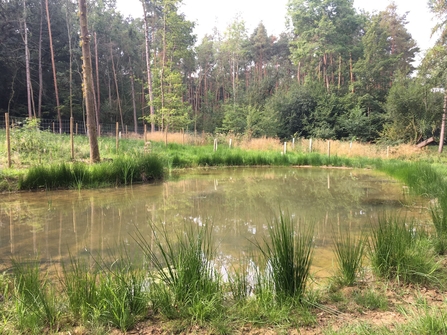Despite their small size, research has shown that at the landscape scale ponds support a greater diversity of freshwater plants and animals and more uncommon species than larger waterbodies like rivers and lakes [1]. We have lost approximately 50% of our ponds from the UK over the last century, and around 80% of the remaining UK ponds are degraded, usually due to poor water quality or a lack of or inappropriate management.
Ponds are a critical part of the freshwater system and provide a habitat for approximately two thirds of freshwater species, while also being important for terrestrial species such as pollinators and bats. They provide a range of ecosystem services, for example, they may play an important role as a nature based solution and help mitigate climate change by sequestering carbon and alleviating flooding.
Recent research has shown that landscape-level freshwater biodiversity in lowland agricultural landscapes can increase by an incredible 26% simply by creating clean-water ponds [2]. This increase in biodiversity is of a magnitude higher compared to other catchment conservation projects, demonstrating the exceptional value of ponds as a keystone habitat in maintaining freshwater biodiversity. A key reason for these observations is the ability of ponds to provide reliably clean, unpolluted water which is a rare occurrence in our now heavily polluted landscapes and catchments.
Without any practical interventions, freshwater plants are estimated to be declining at a rate of 1% per year across lowland landscapes. However, creating clean-water ponds specifically targeted for biodiversity could be an extremely effective tool to help stem and reverse ongoing declines in freshwater biodiversity in the UK.


